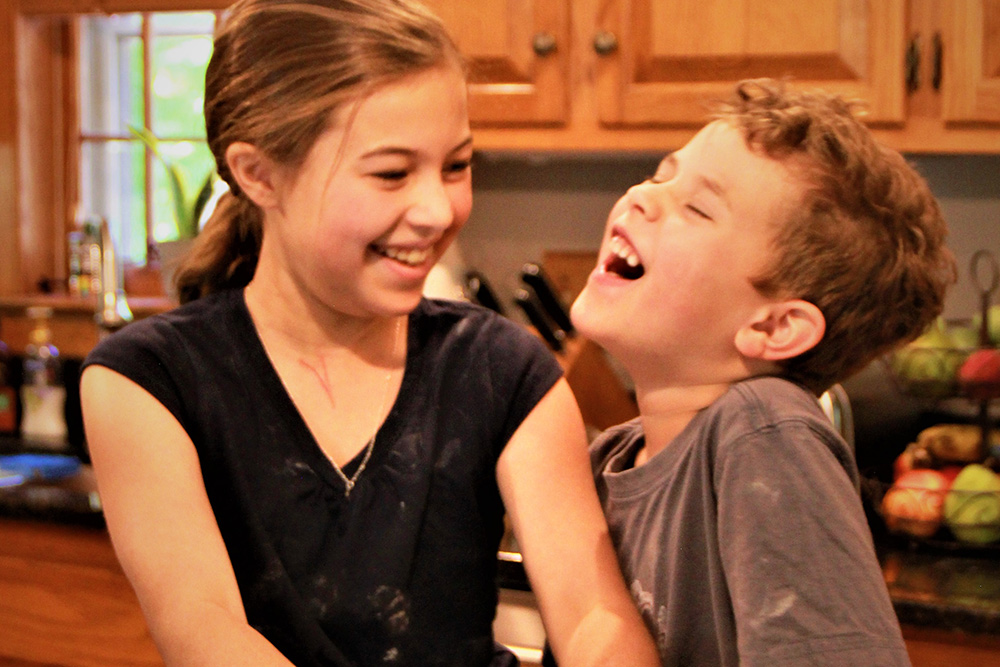If there is one lesson that parents and teachers have learned in the past few months, it is how to expand our definition of learning. The start of summer wraps up the long months of distance-learning and home-schooling that comprised the end of a very strange 2019-2020 school year, but most parents continue to look for educational opportunities in all seasons, in school and out. As a teacher, I propose that cooking with kids is a practical yet fun way to apply many learning skills right in your own kitchen.
Reading the entire recipe is an important first step and a great way to practice literacy skills. A recipe is a basic “how-to” text, with clear and precise instructions on how to create a desired dish. Make sure everyone involved understands all the vocabulary of the ingredients and the processes of the recipe.
Let the little ones help identify and gather all the necessary ingredients and kitchen equipment. Explain some of the processes involved, like what it means to “preheat” the oven, or “chop” an onion. Hearing and seeing the words in the recipe while gathering and viewing the physical ingredients and kitchen equipment helps improve vocabulary in a real-life application. You might need to explain to a younger child how “flour” isn’t the same as “flower,” but with older ones, you can examine the size differences between a teaspoon and tablespoon, or what it means to “incorporate” butter into flour, for example.
There are many age-appropriate STEM (Science, Technology, Engineering and Mathematics) skills that can be practiced when cooking as well. Setting the oven temperature, measuring ingredients while using fractions, keeping track of time – these are all ways to practice math in the kitchen. Science concepts are also involved, such as how adding liquid ingredients to dry ingredients creates dough, or how heat from an oven changes how a dish looks and tastes.
Perhaps more importantly, there are plenty of life skills to be learned in the kitchen. Cooking teaches that planning and preparation are the keys to success when starting any project, including a recipe. Parents and children cooking together is a process that requires collaboration and creativity. More complicated recipes need patience. Failed recipes teach resilience. Helping out with a daily “chore” develops a strong work ethic, while seeing family members enjoy a finished dish builds pride and boosts confidence. Children learn there is a delicious reward at the end of hard work (which of course, needs to include clean-up!). And the more children cook, the more they tend to develop an openness to trying new things.
The recipes I’ve included here come from Connecticut’s own Chef Lise Jaeger, a personal chef and caterer who has years of experience creating curriculum and teaching cooking classes to children as well as adults. It’s a recipe for empanadas, which are half-moon-shaped hand pies that originated in Spain. The word comes from the Spanish verb “empañar,” which means “to wrap.”
I’ve chosen this particular dish because it is very hands-on to make (and eat!), so kids will enjoy the whole process, but also because it offers a lot of flexibility. It includes times when participating family members can take a break, but also lots of small tasks to divvy up. Chef Jaeger gives us the basic dough recipe (which can be baked or fried), and also offers two different recipes for savory fillings – one meat version, and one vegetarian version. And, although it may not be traditional, these delicious little hand-held snacks can be filled with something sweet as well. Apples and cinnamon. Nutella and strawberries. I’ll bet you and your kids can come up with some great flavors!
Which brings me to my final point. While I, as a teacher, and you, as a parent, may secretly know that cooking is an educational activity in disguise, your children/students will simply spend a day enjoying a fun family experience and creating long-lasting, and hopefully delicious, memories. And when you’re spending a lot of time at home as we all seem to be these days, that’s the most important lesson of all.
Amy S. White is a teacher, food writer, and line cook in eastern Connecticut. While she wishes she could invite readers to bring their kids over to cook, this column will have to suffice. For more about Amy, visit amyswhite.com.
Photographed by Jolie Frechette






More Stories
Wing It This Summer
Over 50, Underestimated: The Grandfluencers Redefining Age on Social Media
Building Resilient Businesses: Strategies for Success